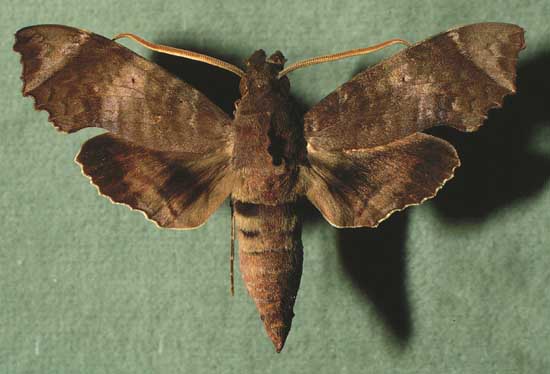
Aleuron carinata male courtesy of Dan Janzen.
This site has been created by Bill Oehlke.
Comments, suggestions and/or additional information are welcomed by Bill.
TAXONOMY:
Family: Sphingidae, Latreille, 1802 |
|
|
Updated as per http://biological-diversity.info/sphingidae.htm (Belize), November 2007 Updated as per Fauna Entomologica De Nicarauga, November 2007 Updated as per The Known Sphingidae of Costa Rica, November 2007 Updated as per personal communication with Tony James (86mm, Gamboa, Panama, June), October 8, 2008 Updated as per AN ANNOTATED CHECKLIST OF THE SPHINGIDAE OF BOLIVIA, December, 2009 Updated as per Sphingidae (Lepidoptera) de Venezuela, Compilado por: Maria Esperanza Chacon; December 2009 Updated as per CATE (description; Chanchamayo, Peru; santa Cruz, Bolivia; Mexico); February 18, 2011 Updated as per Hawk-moths (Lepidoptera: Sphingidae) of Trinidad, West Indies: an illustrated and annotated list; Matthew J.W. Cock; April 6, 2022 |

This site has been created by Bill Oehlke.
Comments, suggestions and/or additional information are welcomed by Bill.
TAXONOMY:
Family: Sphingidae, Latreille, 1802 |
Tylognathus philampeloides C. & R. Felder, 1867, Brazil, is same as Aleuron carinata.
orophilos Boisduval, [1875], Brazil, is same as Aleuron carinata.
The word "aleuron" is Greek for wheat flour or meal.
Easily distinguished from all other species of Aleuron (except Aleuron cymographum) by the black belts on the anterior margins of the abdominal
segments dorsally; these are not visible when the segments are telescoped into one another, except for the two first belts, which are broader. Aleuron
cymographum differs in having the pale apical patch of the forewing upperside delimited basally by a crenulated white line between the costa to M2.
Second labial palp segment very strongly angulate, much more so than in other species of Aleuron.
Male: First labial palp segment distinctly angulate laterally at apex.
Forewing upperside with nine more or less evenly dentate transverse lines between the base of CuA2 and outer margin.
Female: First labial palp segment slightly convex.
Forewing upperside with transverse lines between the base of CuA2 and outer margin very weak, except a median and a postmedian line, which are straight,
parallel and prominent. CATE
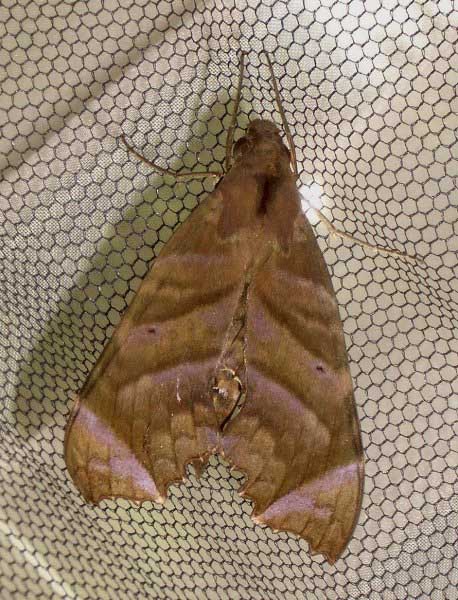
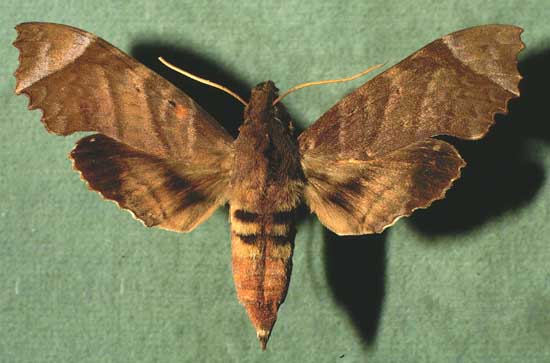
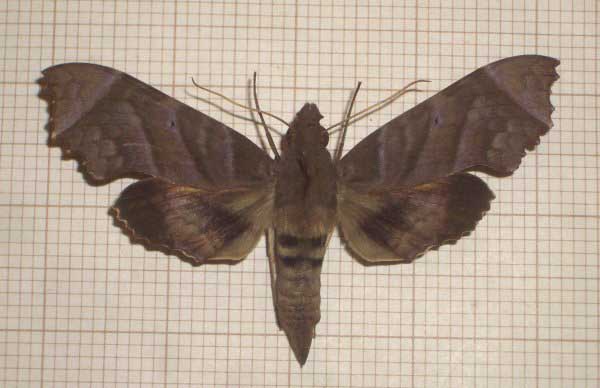
Larvae feed on Doliocarpus dentatus , and Curatella americana, and probably other members of Dilleniaceae family.In the first instar the larva is green with an orange head and black hair-like tail as long as the body. | 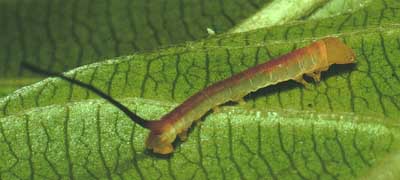
|
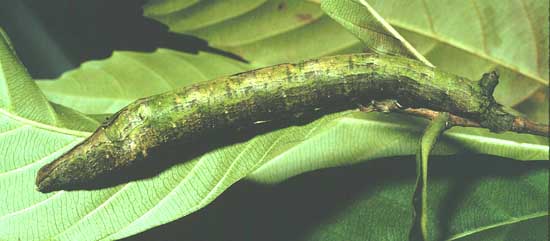
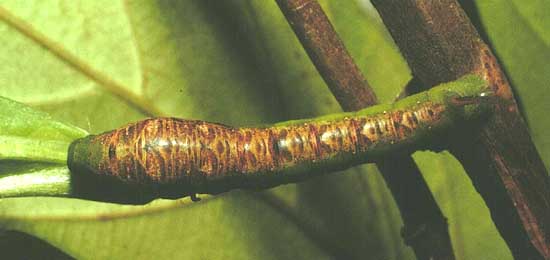
Caterpillars pupate in underground chambers. The pupa is black and orange and black spotted and ringed. The wing casings are clear orange. The venter of the thorax and the face are black. Pupal stage is usually about 23 days except for diapause during dry season.
Return to Sphingidae Index
Return to Dilophonotini Tribe
Use your browser "Back" button to return to the previous page.
This page is brought to you by Bill Oehlke and the WLSS. Pages are on space rented from Bizland. If you would like to become a "Patron of the Sphingidae Site", contact Bill.
Please send sightings/images to Bill. I will do my best to respond to requests for identification help.